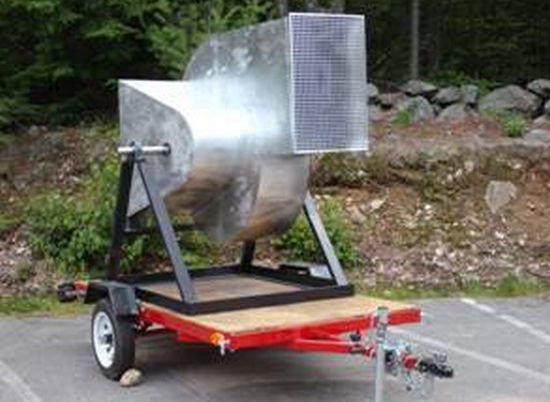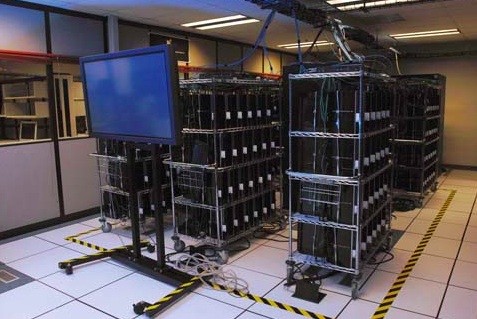Bladeless wind turbine to generate up to 10KW of power ????
Wednesday, May 5, 2010, 02:08 PM
Posted by Administrator

From the article:
_____________________________________________
Solar Aero has recently been awarded a patent for a new bladeless wind turbine, the Fuller Wind Turbine, which is being claimed to be entirely safe for wildlife and as an added advantage, it generates electricity without any noise.
The entire assembly is contained in the housing and the only movement visible to an observer is the movement of the housing as it adjusts to the direction of the wind. The company expects that their wind turbine will be able to deliver power at a comparable cost to coal-fired power plants.
_____________________________________________
This is not a lot of information. First, we measure energy in use over time, so the statement of 10KW in the heading is without supporting information. Does the 10KW come from the portable size unit shown in the picture or a unit that is 50x larger? Does the 10KW come as a monthly value since our utility bills come monthly? These are questions I am curious about.
What I can tell you with some certainty is this, a class 1 air flow contains about 200 watts per square meter. This means; If your machine can catch 1 square meter of air in a class 1 flow, 100% efficiency would mean collecting 200 watts of energy. Classes range from Class 1 (200 watts/square meter or less at 50 meters altitude) to Class 7 (800 to 2000 watts/square meter). However, there are problems with this possibility I will address in a minute. Take a look at that photo, lets assume the opening is about 1 square meter. This means the maximum, in a theoretical perfect world, that this machine can harvest is 200 watts in a class 1 air flow.
Now the problem: There is a little piece of bad news called Betz' law. Back in 1919 a smart German physicist named Albert Betz figured out that the most you can possibly get out of a wind turbine is around 59% of the power in the wind. This is a nondisputable bit of physics. I'm not going to prove it here but it is not hard to at least understand why we can never convert 100% of the wind's power.
Imagine a wind energy extraction machine of 100% efficiency that could take all of the kinetic, (moving), energy out of the wind. That would mean the velocity, (movement), on the "out" or "leaving" or "exit" side of the turbine blades would be zero, zilch, nada. No kinetic energy left. No velocity left. No wind. Dead calm.
If the velocity leaving the blades is zero then the air wouldn't be leaving at all. There would be no air movement, meaning the air after the blades isn't getting out of the way of the air coming in, which would mean the fresh air couldn't come in, which would mean there is no air flowing through the turbine blades, which would mean no power. In order to at least keep the wind moving through the turbine there has to be some velocity or energy in the air after going through the blades so that the air can get out of the way of the air coming through next. Sort of a "Catch-22". Just to keep the machine running at all the efficiency has to be less than 100%.
Mr. Betz pointed this out and then proceeded to prove, with solid physics and math, that the best that could be achieved by a wind turbine is around 59%. In other words, a perfect best-possible wind turbine would be able to convert almost 59% of the power in the wind into mechanical rotating power.
With this in mind, take another look at that photo. The idea is nice, the execution is elegant, however the promise is very big compared to known processes.
Consider also, this machine needs to be aligned with the wind to function. In areas that the wind changes direction, there will have to be another device or feature to keep the alignment.
This type of turbine will spin very fast, but there is also no torque for doing work. If you are interested, here are some further references on the Tesla turbine:
http://en.wikipedia.org/wiki/Tesla_turbinehttp://en.wikipedia.org/wiki/Boundary_layerhttp://en.wikipedia.org/wiki/Reynolds_numberhttp://en.wikipedia.org/wiki/Wind_turbine





 Calendar
Calendar




